Megadrive1988
Veteran
this read is quite long and does not seem to be terrific english, but is posted "as is" as I found it.

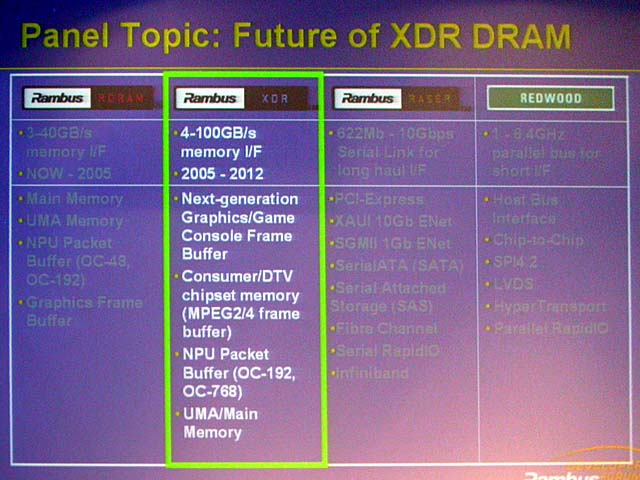
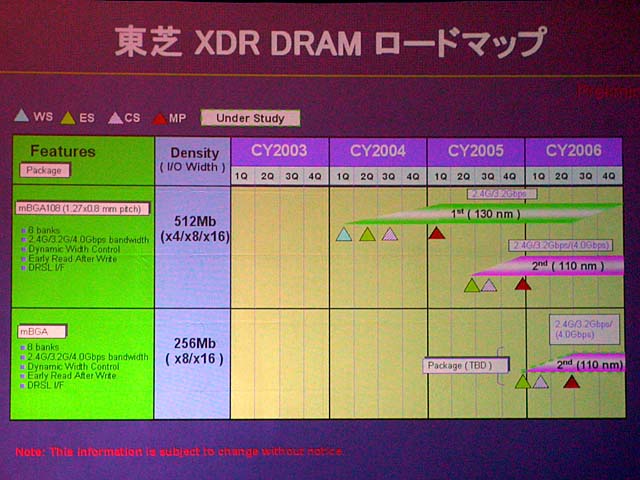

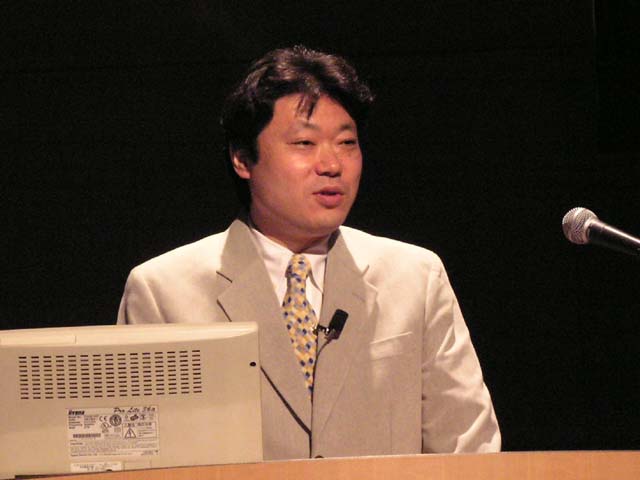

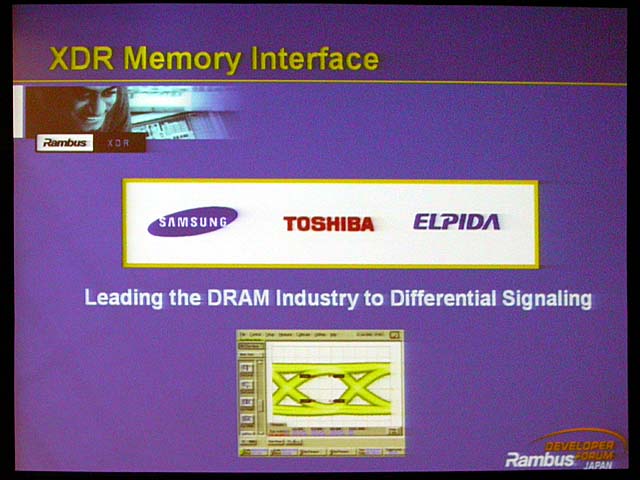

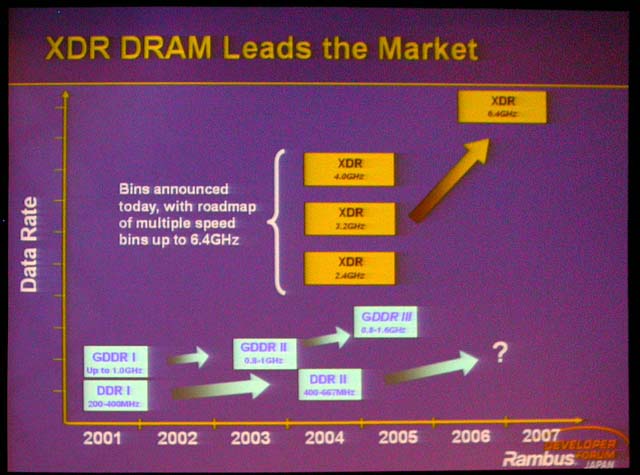

http://www.playstation3insider.com/forums/viewtopic.php?t=2799
The next generation PlayStation (PlayStation 3? ) The next generation memory "XDR DRAM which is adopted (Yellowstone: The yellow stone)"the formal specifications and production plan were announced. As for XDR DRAM with the next generation memory which Rambus developed, 2.4? Per pin of 4Gtps transfer rate is achieved. At 2005 point in time when XDR DRAM appears, it becomes DRAM technology of the highest speed. The summary of XDR Rambus and the SONY computer entertainment (SCE), it does not load XDR DRAM to of PlayStation 3 still declaration. But, many DRAM industry authorized personnel testify "PlayStation as for the adoption of XDR DRAM to 3 and the Cell processor, the fact that it has been decided from before 1 year above".
In this XDR DRAM which marketability is not clear, Toshiba, the fact that, Samsung Electronics and 3 corporation thing DRAM vendors embark on production, most is evidence. In addition, as for the number of XDR DRAM tips/chips which are loaded onto PlayStation 3 by the information from the DRAM industry authorized personnel, it was found that they are 4 or more. As for capacity of the first mass production tip/chip of XDR DRAM 512Mbit. Because of that, when we assume, that PlayStation 3 on-board memory is 4, memory capacity becomes 256MB. The transfer rate of XDR DRAM which is loaded onto PlayStation 3 is seen per pin 3.2Gtps (Giga transfer per second) with. In case of 4 constitution, memory zone of the whole system is the possibility that it reaches to 25.6GB/sec.
This time, Toshiba, and Samsung made also the production plan of XDR DRAM clear. As a result, became subsidiarily, also the production time of PlayStation 3 clear. Because the fact that the real mass production of XDR DRAM stands up is 2005 1st quarter, it is seen that PlayStation 3 appears in 2005 first half. As for this, in the start-up time of XDR DRAM, is because the application of XDR DRAM of the large amount does not exist other than PlayStation 3. If you say opposite, it has become the production plan which is adjusted to PlayStation 3. In addition, because Toshiba makes the market estimate of XDR DRAM clear, also estimate of the production quantity of PlayStation 3 was visible. Startup time 2005 is monthly output several 100000 unit scales, but increasing at a stroke to 2006, year 2,000? It seems that production of 3,000 ten thousand units or less is anticipated. When we assume, that is, SCE with PlayStation 3, passing the approach run of approximately 1 year, after that is presumed that it has the plan which you start at a stroke.
Toshiba (the left) with XDR production plan of Because PlayStation 3 is visible, it faces to XDR DRAM "Presently, we (the game) of the next generation do the development of the console and related technology. Among those (Rambus) doing the alliance, it is advancing the development of some technologies ", The SONY computer entertainment (SCE) Okamoto Shinichi corporate executive and CTO Rambus Developer Forum which last week is held (RDF) with, this way while choosing word, suggested the technology of Rambus and the relationship of PlayStation 3. Of course, in just this speech, whether or not this day XDR DRAM which is announced is, is adopted for PlayStation 3, you do not understand. However, when the floor of the conference - it goes, everyone XDR DRAM being adopted for the next generation PlayStation story is done in prerequisite. You say that because in DRAM industry this case is widely known fact. As for the world of DRAM, PC and DRAM of the main stream which is used in the server (Commodity DRAM) with that derivative item with main current, cannot succeed the DRAM technology other than that easily. XDR DRAM, designates consumer graphics, the video memory of GPU, network equipment and the digital home appliance such as game machine as the target. But, "other than PlayStation 3 as for the market of XDR DRAM scale is unclear still. Perhaps, Toshiba and SONY use in the respective company product other than the game machine, but for the time being, it is possible to call memory for PlayStation 3 ", that a certain industry authorized personnel says.
When it is opposite, if PlayStation 3 has not been decided, other than Toshiba which is cooperated closely with SCE, you say that it cannot step on in XDR DRAM production. In fact, as for a certain DRAM vendor which last year it collected materials "as for Yellowstone it is optimum to the network equipment and the like, but the field unexpected and market scale is small. When of development cost is thought, it cannot enter with just that, "that you said. In addition, summer of last year, the case where it collected materials a certain overseas DRAM vendor, "Yellowstone (it produces whether or not), it is the production planned circumstance of PlayStation 3. If we assume that it cannot provide at the Toshiba 1 corporation, Yellowstone there is a value which is popular ", that it told. and Samsung making the production plan of XDR DRAM clear this time, in addition to Toshiba that much the demand for XDR DRAM (PlayStation 3) has meant the fact that it is visible. Target Samsung of Okamoto Shinichi corporate executive and CTO XDR of the SONY computer entertainment, Toshiba and 3 corporations of enter - PlayStation 3 where the on-board DRAM quantity increases As for the reason where the DRAM vendor has put out motivation to XDR DRAM in that appearance, you say that demand for memory also it is large with PlayStation 3 to increase PlayStation 2 compared to.
The number of DRAM tips/chips which PlayStation 3 loads is many "PlayStation 2 compared to. Therefore, speaking directly, there is an entry chance for the DRAM vendor ", that a certain DRAM industry authorized personnel talked. Concerning number of DRAM tips/chips, it means kind of that the group of industry authorized personnel are similar. Because of that, the quantity of RDRAM of PlayStation 2it exceeds PlayStation 3, it is seen that XDR DRAM 4 or more is loaded. It presumed 2 with this corner of the time before, but as for that by mistake it was. When it becomes 8, in order high cost to pass as expected the game machine, it is thought that 4 is. Actually, a certain industry authorized personnel says that 4 is. In addition, a certain DRAM industry authorized personnel "this time, (SCE) from first asked the multi-vender strongly", that reveals real state. RDRAM at the beginning was the Toshiba one source, but from after it designated SCE as the multiple source. That SCE desires the multiple source with XDR DRAM it is seen that other than the thing where the memory airlift increased, the difference of the position of RDRAM and XDR DRAM has influenced.
As for RDRAM at the point in time when it is adopted for PlayStation 2 there is the possibility that it becomes leading DRAM technology as the main memory of PC, it was seen that many manufacturers adopt. Because of that, the second source was in profit easy circumstance. Actually, that you had answered that because SCE side RDRAM becomes the standard memory with PC, vis-a-vis the question which you say whether the tip/chip "Emotion Engine" of PlayStation 2 first was announced with Q&A with of "1999 ISSCC", why RDRAM is used. In other words, it is the case that it seriously considered also the fact that it can procure from the source whose SCE with memory adoption, is wide originally. However, as for XDR DRAM as for the big market like PC main memory it is not visible yet. At stage of last summer, still as for the XDR DRAM vendor only the Toshiba one corporation it had been visible. If only the Toshiba 1 corporation it produces, when the shipment of PlayStation 3 extends, there is a possibility short supply occurring.
Because of that, it is thought that guarantee of the plural sources was requested. - To load XDR DRAM of 256MB, as for memory zone to 25.6GB/sec When PlayStation 3 4 loads XDR DRAM, when it becomes, it can calculate memory zone and the memory quantity simply. XDR DRAM appears in 3 speed bottles of 2.4/3.2/4Gtps. But, really as for becoming the target with 3.2Gtps, with the startup, because there is a possibility where in full it cannot carry all tip/chip in 3.2Gtps it is presumed that there are also the specifications of 2.4Gtps. As for XDR DRAM which each DRAM vendor produces, the 512Mbit item of 32M×16 constitution. The data line becomes connection of the point to point, (the address line bus type) for the sake of, when we assume that 4 it loads, becomes the memory interface of 64bit. Because of that, when XDR DRAM of 3.2Gtps is used, it becomes the memory zone of 3.2Gtps×64bit= approximately 25.6GB/sec. As for desktop PC of the same time, from dual channel DDR2-533 the movement period to DDR2-667. As for zone 8.5? It becomes 10.7GB/sec. In other words, with PlayStation 2 as for memory zone it is the case that those where it is equal to PC of the same time, with PlayStation 3 reach the 2.x two times the PC. By the way, when you compare with 3.2GB/sec of PlayStation 2, it reaches approximately 8 times. Improvement of this memory zone is supported even in the presentation of Rambus. "The entertainment platform, with memory subsystem, memory bandwidth of 10 times becomes necessary in 5 year placing. That with Nintendo64 0.5GB/sec, the next (PlayStation 2) develops with 3.2GB/sec, furthermore in the future ", Dave Mooring president of Rambus talked the trend of memory of the game machine. In other words, in implication, in the next game machine it is the case that it suggests that zone of 10 times can be actualized with the technology of Rambus. When we assume, that it is trend of 10 times in 5 years, the memory zone of 25.6GB/sec is almost agreeable. Memory bandwidth of 10 times is needed for the difference 5 year placing of the zone of DRR and XDR of the Dave Mooring president same time of Rambus However, zone enlargement of 10 times exceeds the acceleration pace of DRAM in 5 years. Because of that, you must increase either memory interface width and the number of DRAM tips/chips every generation.
It is presumed that with the solution of Rambus, with Nintendo64 those where it is RDRAM of 1 tip/chip, with PlayStation 2 become Direct RDRAM of 2 tips/chips, perhaps with PlayStation 3 become XDR DRAM of 4 tips/chips. This means also the increase of the memory airlift inevitably. With PlayStation 2 RDRAM of the 128Mbit item was the main memory of 32MB with 2. Vis-a-vis that, because with PlayStation 3 XDR DRAM stands up with 512Mbit, it becomes main memory of total 256MB with 4. This way, the announcement with RDF from peripheral information, the memory constitution of PlayStation 3 considerably was visible. But, those where it is funny above that, from plan of the DRAM vendor, also the schedule and production plan of PlayStation 3 being transparent, are to start being visible. Concerning this, we would like to report next.










http://www.playstation3insider.com/forums/viewtopic.php?t=2799
